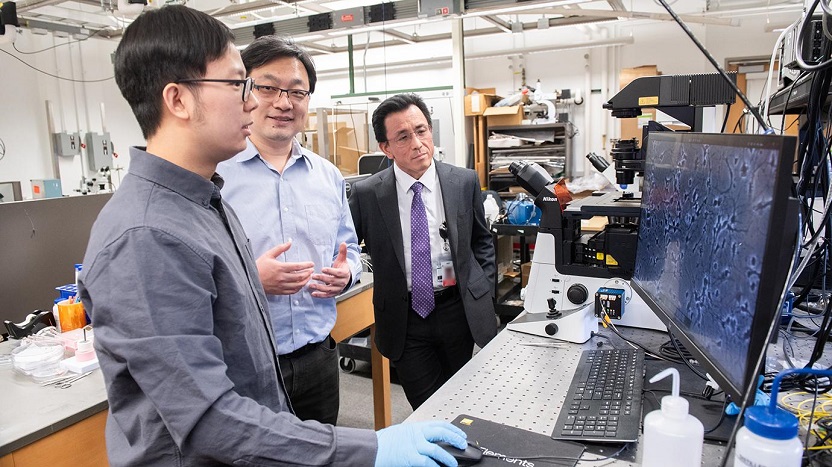UChicago scientists invent ultra-thin, minimally invasive pacemaker controlled by light

University of Chicago materials researcher Pengju Li holds a prototype pacemaker made of a specially engineered membrane. At just one-fiftieth of a gram, it is significantly smaller and lighter than current pacemakers.
Sometimes our bodies need a boost. Millions of Americans rely on pacemakers—small devices that regulate the electrical impulses of the heart in order to keep it beating smoothly. But to reduce complications, researchers would like to make these devices even smaller and less intrusive.
A team of researchers with the University of Chicago has developed a wireless device, powered by light, that can be implanted to regulate cardiovascular or neural activity in the body. The featherlight membranes, thinner than a human hair, can be inserted with minimally invasive surgery and contain no moving parts.
Published Feb. 21 in Nature, the results could help reduce complications in heart surgery and offer new horizons for future devices.
“This advancement is a game-changer in cardiac resynchronization therapy,” said Narutoshi Hibino, MD, Professor of Surgery at the University of Chicago Medicine and co-corresponding author on the study. “We're at the cusp of a new frontier where bioelectronics can seamlessly integrate with the body's natural functions.”
Read more about this breakthrough device from UChicago News.

